当前位置:网站首页>Numpy --- basic learning notes
Numpy --- basic learning notes
2022-07-07 15:50:00 【madkeyboard】
Numpy and List
List The functions that can be done are roughly the same as Numpy It's almost the same , however Numpy The advantage of is that the operation is very fast , because Numpy In storage, a piece of continuous physical address of the computer is used to store data , It takes less time to search data , and List The stored data is scattered in different physical spaces .
So when dealing with large-scale data ,Numpy than List The effect is good .

An example is given to demonstrate the time they spend processing data separately , As you can see from the results , Let a random input increase 10000 Time ,Numpy The calculation speed of is about 10 times , If there's more data , The effect should be better .
import time
import numpy as np
t0 = time.time()
# python list
l = list(range(100))
for _ in range(10000):
for i in range(len(l)):
l[i] += 1
t1 = time.time()
# numpy array
a = np.array(l)
for _ in range(10000):
a += 1
print("Python list spend {:.3f}s".format(t1-t0))
print("Numpy array spend {:.3f}s".format(time.time()-t1))

dimension
Numpy One of its advantages is that it can handle multidimensional data , In machine learning and artificial intelligence, the calculation of multidimensional data often occurs .
Create multidimensional data
For example, it takes time for us to test a car to accelerate for hundreds of miles , First create a list of hundred mile accelerations
car = np.array([5,12,3,13])
print(" Time consuming : ",car,"\n dimension :",car.ndim)

You can see that the output is one-dimensional , Then if you add several groups of data, it means multiple tests , You create two-dimensional data
car = np.array(
[[5,12,3,13],
[5.2,11,14,5],
[6.1,6.6,4.3,6.5]])
print(" Time consuming : ",car,"\n dimension :",car.ndim)

Empathy , Create a three-dimensional representation to test the vehicle on different sites .
car = np.array([
[
[5, 10, 12, 6],
[5.1, 8.2, 11, 6.3],
[4.4, 9.1, 10, 6.6]
],
[
[6, 11, 13, 7],
[6.1, 9.2, 12, 7.3],
[5.4, 10.1, 11, 7.6]
],
])
print(" The total dimension :", car.ndim)
print(" site 1 data :\n", car[0], "\n site 1 dimension :", car[0].ndim)
print(" site 2 data :\n", car[1], "\n site 2 dimension :", car[1].ndim)
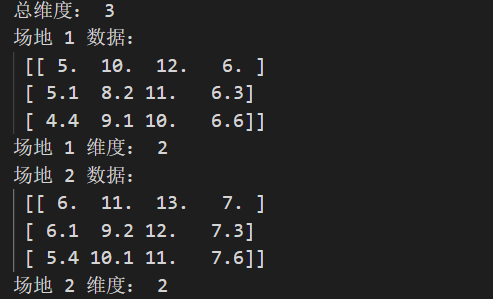
Add data
Add one-dimensional data .np.concatenate()
cars1 = np.array([5, 10, 12, 6])
cars2 = np.array([5.2, 4.2])
cars = np.concatenate([cars1, cars2])
print(cars) #[ 5. 10. 12. 6. 5.2 4.2]
Add 2D data
test1 = np.array([5, 10, 12, 6])
test2 = np.array([5.1, 8.2, 11, 6.3])
# First, we need to turn them into two dimensions , The following two methods can add dimensions
test1 = np.expand_dims(test1, 0)
test2 = test2[np.newaxis, :]
print("test1 After adding dimensions ", test1)
print("test2 After adding dimensions ", test2)
# Then superimpose on the first dimension
all_tests = np.concatenate([test1, test2])
print(" After the exhibition \n", all_tests)

Merge data
As long as the dimensions can be aligned , You can merge on any dimension .
import time
import numpy as np
test1 = np.array([5, 10, 12, 6])
test2 = np.array([5.1, 8.2, 11, 6.3])
# First, we need to turn them into two dimensions , The following two methods can add dimensions
test1 = np.expand_dims(test1, 0)
test2 = test2[np.newaxis, :]
all_tests = np.concatenate([test1, test2])
print(" The first dimension is superimposed :\n",np.concatenate([all_tests,all_tests],axis=0))
print(" The second dimension is superimposed :\n",np.concatenate([all_tests,all_tests],axis=1))
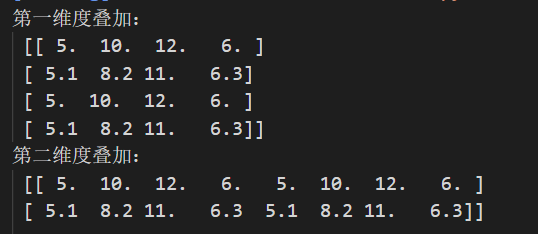
np.hstack() Horizontal merger
np.vstach() Vertical merge
- Observation form
test1 = np.array([
[5, 10, 12, 6],
[5.1, 8.2, 11, 6.3],
[4.4, 9.1, 10, 6.6]
])
print(" According to the total :",test1.size)
print(" The first dimension ",test1.shape[0]) # Indicates how many tests have been performed
print(" The second dimension ",test1.shape[1]) # Indicates the number of vehicles tested
print(" All dimensions ",test1.shape)
# The first dimension : 3
# The second dimension : 4
# All dimensions : (3, 4)
Data selection
- Single choice
import numpy as np
b = np.array([
[1,2,3,4],
[5,6,7,8],
[9,10,11,12]
])
print("b[1]:\n",b[1]) # Select all numbers in the second row
print("b[2,1]:\n",b[2,1]) # Select the number of the third row and the second column
print("b[[1,0],[2,3]]:\n",
b[[1,0],
[2,3]]) # The two numbers taken are [1,2] and [0,3]
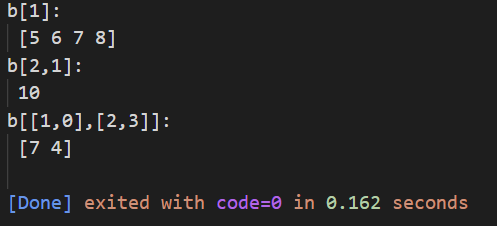
- section
print("b[1]:\n",b[:2]) # Select all the numbers in the first and second rows
print("b[2,1]:\n",b[:2,:3]) # Select the first and second rows , front 3 Number of columns
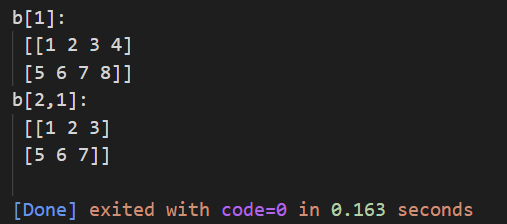
- To choice
import numpy as np
b = np.array([
[1,2,3,4],
[5,6,7,8],
[9,10,11,12]
])
condition = (b < 5) & (b != 2)
print(b[condition]) # 1 3 4
print(np.where(condition,-2,b)) # Replace the value satisfying the condition with -2
print(np.where(condition,-2,-1)) # Replace the value satisfying the condition with -2, If not, replace with -1
Basic operation
import numpy as np
a = np.array([
[1,2],
[3,4]
])
b = np.array([
[5,6],
[7,8]
])
print(a.dot(b)) # Matrix dot product print(np.dot(a, b))
np.max() # Maximum
np.min() # minimum value
np.sum() # Sum up
np.prod() # Multiplicative multiplication
np.size() # total
np.count_nonzero() # Nonzero total
np.mean() # The average
np.median() # Median
np.std() # Standard deviation
np.argmax() # The subscript of the maximum value
np.argmin() # Subscript of minimum value
np.ceil() # Rounding up
np.floor() # Rounding down
np.clip(a,b) # Define a rounded upper 、 Lower bound
a = np.array([150.1, 166.4, 183.7, 170.8])
print("clip:", a.clip(160, 180))
# clip: [160. 166.4 180. 170.8]
# Official documents https://numpy.org/devdocs/user/quickstart.html#basic-operations
Change the data form
Add dimensions
a_2d = a[np.newaxis, :] a_none = a[:, None] a_expand = np.expand_dims(a, axis=1) # These three methods can achieve the same effectReduce dimensions
a_squeeze = np.squeeze(a_expand) a_squeeze_axis = a_expand.squeeze(axis=1) # squeeze Only dimensions can be reduced shape Up for 1 Dimensions , Ensure that the data structure does not change # If you want to change the dimension, you can use reshape a = np.array([1,2,3,4,5,6]) a1 = a.reshape([2, 3]) a2 = a.reshape([3,1,2]) # I don't understand here # a1 shape: (2, 3) [[1 2 3] [4 5 6]] a2 shape: (3, 1, 2) [[[1 2]] [[3 4]] [[5 6]]] # # Matrix transposition np.transpose() np.TMerge
np.column_stack() # columns np.row_stack() # merger # The above two merge methods are similar to vstack and hstack The difference is that : Use vstack and hstack You need to process dimension information first , and column_stack and row_stack Automatic processing feature_a = np.array([1,2,3,4,5,6])[:, None] feature_b = np.array([11,22,33,44,55,66])[:, None] c_stack = np.hstack([feature_a, feature_b]) # np.concatenate() It is suitable for merging in different situations np.concatenate([a, b], axis=0)Take apart
a = np.array( [[ 1, 11, 2, 22], [ 3, 33, 4, 44], [ 5, 55, 6, 66], [ 7, 77, 8, 88]] ) print(np.vsplit(a, indices_or_sections=2)) # In two parts print(np.vsplit(a, indices_or_sections=[2,3])) # Slice into [:2],[2:3], [3:] np.hsplit() # Crosscut The function is similar to
a = np.array( [[ 1, 11, 2, 22], [ 3, 33, 4, 44], [ 5, 55, 6, 66], [ 7, 77, 8, 88]] ) print(np.split(a, indices_or_sections=2, axis=0)) # In two parts print(np.split(a, indices_or_sections=[2,3], axis=1)) # In the second dimension , Slice into [:2],[2:3],[3:] # Use split Custom segmentation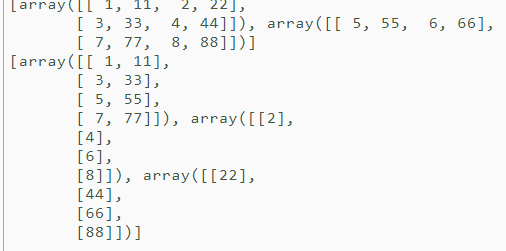
边栏推荐
- Pit avoidance: description of null values in in and not in SQL
- Write sequence frame animation with shader
- Iterator and for of.. loop
- Three. JS introductory learning notes 04: external model import - no material obj model
- 【数字IC验证快速入门】22、SystemVerilog项目实践之AHB-SRAMC(2)(AMBA总线介绍)
- Three. JS introductory learning notes 11:three JS group composite object
- numpy---基础学习笔记
- 15. Using the text editing tool VIM
- Three. JS introductory learning notes 05: external model import -c4d into JSON file for web pages
- Super simple and fully automated generation super signature system (cloud Xiaoduo minclouds.com cloud service instance), free application in-house test app distribution and hosting platform, maintenan
猜你喜欢
![[quick start of Digital IC Verification] 18. Basic grammar of SystemVerilog learning 5 (concurrent threads... Including practical exercises)](/img/91/16a370ac41adc8fe31507765a82b0a.png)
[quick start of Digital IC Verification] 18. Basic grammar of SystemVerilog learning 5 (concurrent threads... Including practical exercises)
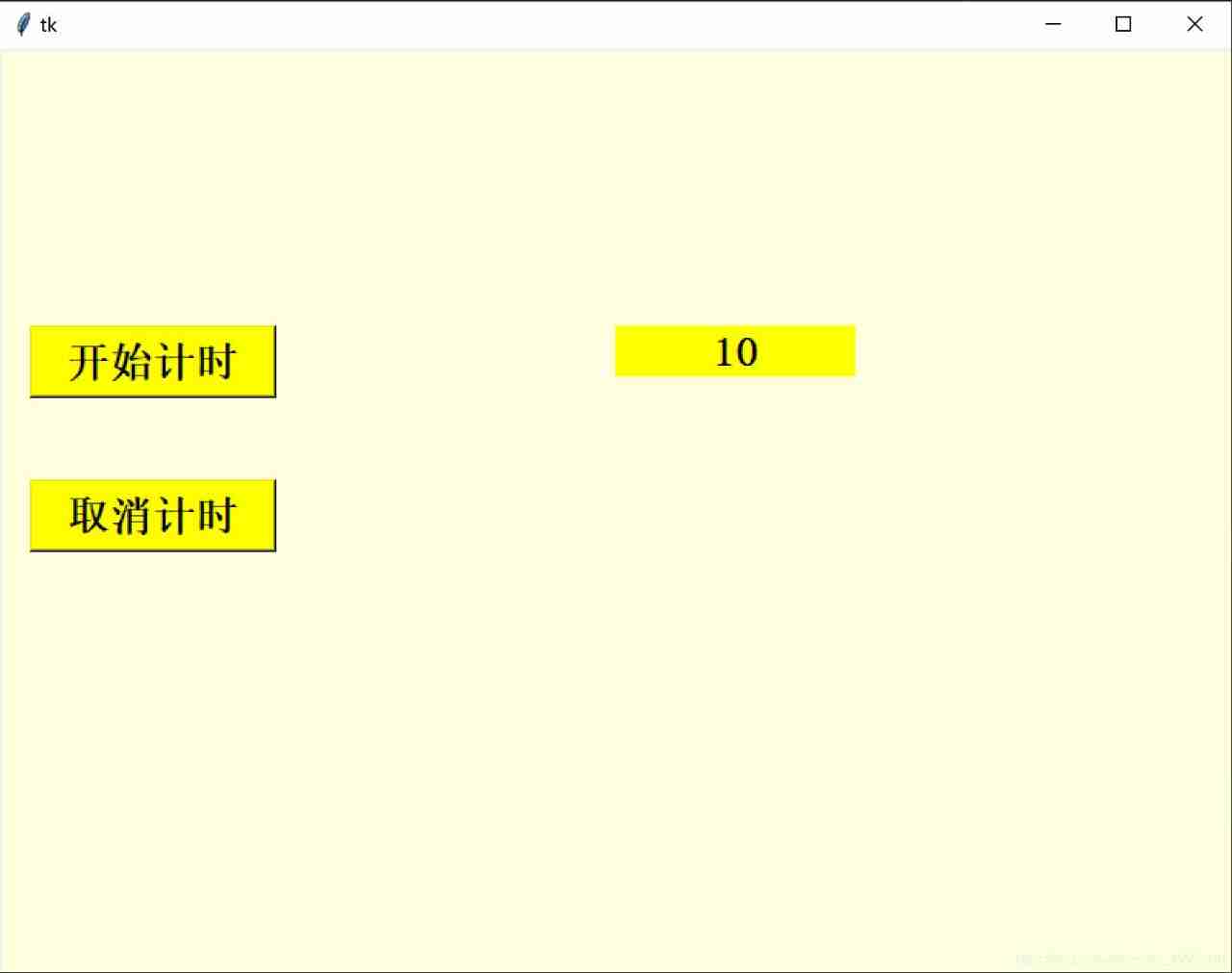
Tkinter after how to refresh data and cancel refreshing
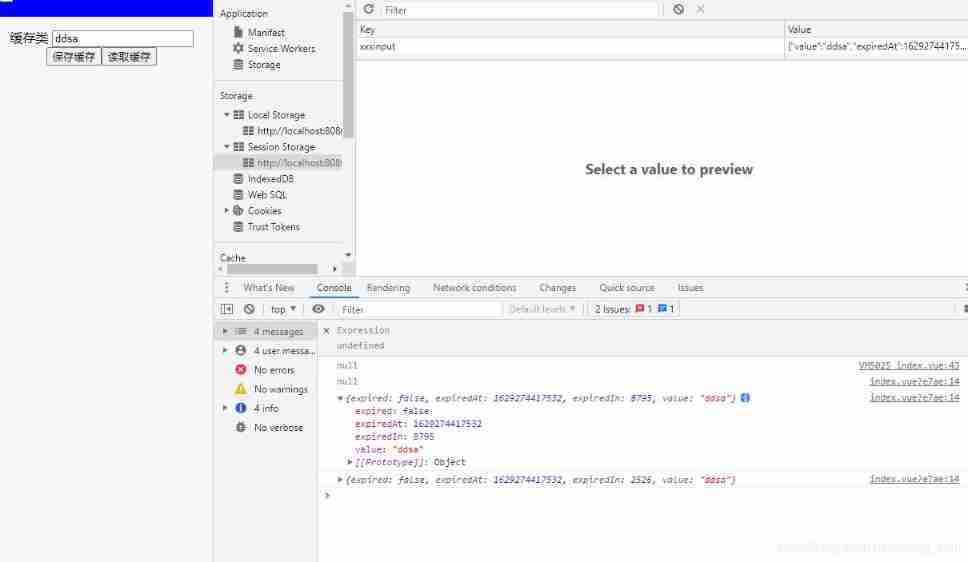
TS as a general cache method

【数字IC验证快速入门】19、SystemVerilog学习之基本语法6(线程内部通信...内含实践练习)
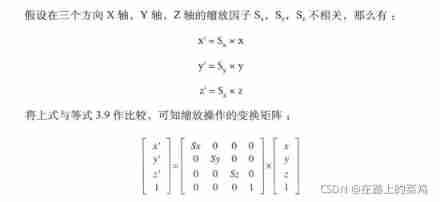
webgl_ Graphic transformation (rotation, translation, zoom)

Syntax of generator function (state machine)
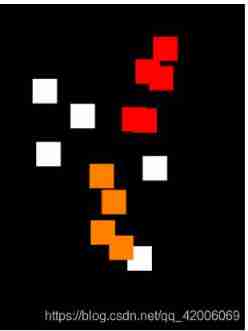
Getting started with webgl (4)

HW primary flow monitoring, what should we do

Iterator and for of.. loop

numpy---基础学习笔记
随机推荐
10 schemes to ensure interface data security
Three. JS introductory learning notes 13: animation learning
银行需要搭建智能客服模块的中台能力,驱动全场景智能客服务升级
【数字IC验证快速入门】26、SystemVerilog项目实践之AHB-SRAMC(6)(APB协议基本要点)
Asynchronous application of generator function
Runnable是否可以中断
Three. JS introductory learning notes 0: illustration of how webgl and threejs work
[quick start of Digital IC Verification] 20. Basic grammar of SystemVerilog learning 7 (coverage driven... Including practical exercises)
webgl_ Enter the three-dimensional world (2)
Whether runnable can be interrupted
Tkinter after how to refresh data and cancel refreshing
Actually changed from 408 to self proposition! 211 North China Electric Power University (Beijing)
Matlab experience summary
Webgl texture
Three. JS introductory learning notes 05: external model import -c4d into JSON file for web pages
Three. JS introductory learning notes 00: coordinate system, camera (temporarily understood)
【数字IC验证快速入门】19、SystemVerilog学习之基本语法6(线程内部通信...内含实践练习)
15. Using the text editing tool VIM
How to create Apple Developer personal account P8 certificate
Do not use memset to clear floating-point numbers